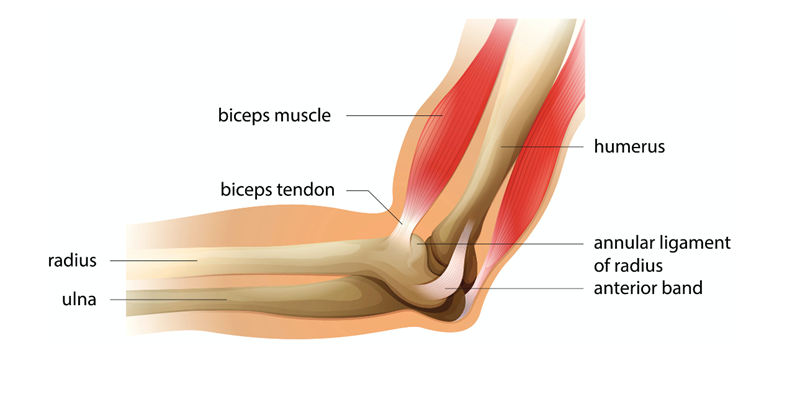Elbow Ligament Tear Treatment in Faridabad
An elbow ligament tear refers to damage or injury to the ligaments in the elbow joint. The elbow joint is stabilised by several ligaments, including the Ulnar Collateral Ligament (UCL) on the inner side and the Radial Collateral Ligament (RCL) on the outer side.

Types of Elbow Ligament Tears
- Radial Collateral Ligament (RCL) Tear:
The RCL is a ligament on the outer side of the elbow, and tears in this ligament are less common than UCL tears.
- Ulnar Collateral Ligament (UCL) Tear:
The UCL is a ligament on the inner side of the elbow and is often subject to significant stress in activities that involve throwing motions.
Causes :
The Elbow Ligament Tear occurs mostly in the following cases::
- Overuse and Repetitive Stress : Continuous, repetitive motions of the elbow.
- Sudden Force : A sudden, forceful movement of the elbow joint.
- Trauma : A direct impact or trauma to the elbow, such as a fall, car accident, or sports-related injury, can lead to ligament tears.

What are the common Symptoms of Elbow Ligament Tear ?
Common signs of Elbow Ligament Tear may include:
- Swelling: Swelling around the injured area of the elbow is common.
- Pain: Persistent pain on the inner or outer side of the elbow is a primary symptom.
- Instability: A feeling of instability or looseness in the elbow joint.
- Reduced Range of Motion
- Tenderness
- Numbness and Tingling
- Clicking or Catching Sensation
How to diagnose Elbow Ligament Tear?
Physical Examination: Healthcare professionals assess your range of motion, stability, and tenderness in the affected area.
Imaging Studies:
- X-rays: X-rays are often the first imaging test. They provide a view of the bones in the elbow and can help identify fractures or abnormalities.
- Magnetic Resonance Imaging (MRI): An MRI provides detailed images of the soft tissues, including the ligaments. It is highly effective in diagnosing ligament tears and evaluating their extent.
- Ulnar Nerve Examination
- Diagnostic Injection
